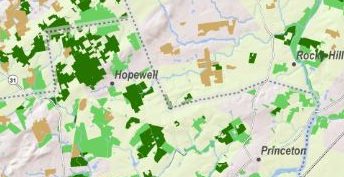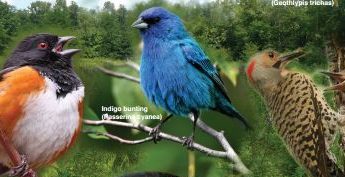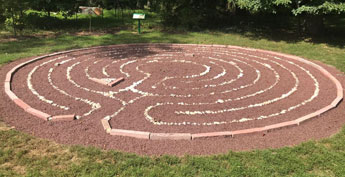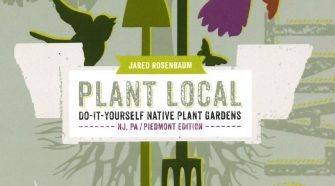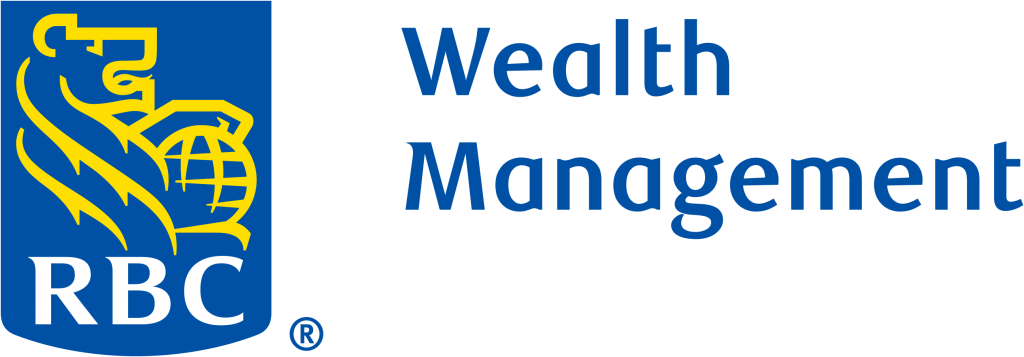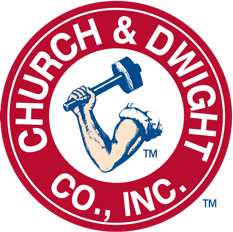Thank you, Community News – and Lisa Wolff – for helping to tell this story!
FOR IMMEDIATE RELEASE ~
- Updated
Could land practices in Hopewell, New Jersey hold a key to mitigating worldwide climate change? A select group of land preservation experts will visit our state and consider that question at their annual retreat in April.
D&R Greenway, a community land trust that has preserved over 22,000 acres of local lands, will showcase their partnered work that features uncommon, scientifically proven methods to better utilize preserved lands.

Linda Mead, President and CEO of D&R Greenway Land Trust, is a member of the Land Trust Alliance Leadership Council, an elite group of approximately 50 land trust executive directors representing the Alliance’s 950 land trust member organizations. As of 2020, LTA member organizations had conserved over 61 million acres of private land across the nation – an area larger than all of America’s National Parks combined.
The Leadership Council comprises both geographical and demographic diversity. “Our land trust leaders are often at the forefront on issues of national importance. They ensure that everyone can benefit from all that the land provides,” said Andrew Bowman, president and CEO of the Land Trust Alliance, which convenes the Land Trust Leadership Council. “The impact of each council member goes well beyond the borders of their own organizations’ service areas and will extend well past their tenures as executive directors. This gathering is an opportunity to share challenges and successes and, most importantly, to learn from each other.”
While D&R plans to share their work encouraging Public/Private partnerships, collaborating with Indigenous people, and expanding their audience through integrating the arts, their deepest dive will be showcasing their land practices that can help mitigate climate change.
Linda Mead said: “Preservation is the first step. Land stewardship goes on forever.” She brought in expert partners to do stewardship research at the St. Michaels Farm Preserve. Soil Carbon Partners was tasked with demonstrating how land stewardship methods could help mitigate climate change and Dr. Dan Rubenstein led researchers from Princeton University to validate the SCP results.
Understanding the Causes
A simple online search for the top causes of global warming returns assorted results. In addition to burning fossil fuels, it is notable that producing food and cutting down forests rank among the top of every list. Since agriculture and deforestation can deplete resources, land conservation organizations are researching best practices to reduce those negative impacts.
Planting trees, or reforestation, is a familiar and popular solution, with good reason. Trees clean the air, store carbon, and are vital to provide shade, cooling, and water.
That said, reforestation addresses part of the problem, but ignores the need for food production. A lesser-known practice, known as regenerative farming, when implemented correctly may solve the food production issues.
Understanding the Solutions
As the name suggests, regenerative farming literally focuses on regenerating the soil and the planet’s ecosystems. Regenerative agriculture improves soil, delivers high-quality food, helps fight climate change, and restore lost biodiversity.
Key regenerative farming practices have their roots (pun intended) with indigenous farmers who work with the land rather than against it.
Ed Huling, founder of Soil Carbon Partners, spent significant time explaining the science of his regenerative farming methods and it boils down to improving the soil fertility so that any crops grown there are of higher quality.
Since most soil is depleted of essential minerals, beneficial microbes and other organic matter, the land is less productive. That means fewer plants grow in it and those that do are not as healthy. Further, if those plants are forage crops to feed livestock, animals will need to eat more to grow.
Conversely, when Huling amends and improves the soil quality, whether for farming or forests, plants sequester more carbon, and crops and livestock grow faster and require far less land to achieve the same yields.
Ideally, we can even use the newly freed up land to plant more forests with amended soil to further boost tree growth, bio-diversity, carbon sequestration, and cooling.
Understanding the research
To demonstrate a full-scale commercial organization, they received a grant from the Grantham Foundation.
Princeton Professor Dan Rubenstein and his research assistant, Gina Talt, monitored the research at St. Michaels Farm Preserve in Hopewell. There were two fields growing animal forage crops with amendments from Soils Carbon Partners, and one control plot which contained grasses and invasive mugwort with unamended soil.
They brought cows out on the land to eat the crops. In the control experiment the cows could roam and graze freely. For the research fields, they employed tightly controlled grazing techniques so cows could only eat at selected areas at treated fields.
Researchers then measured the growth of the cows and forage plants.
Understanding the numbers
According to the verified research results, the fields with SCP amendments showed a 300-670% increase in crop yield over untreated fields. Additionally, the protein content of the plants was 18-50% higher in the treated.
The dramatic increase in both quantity (yield) and quality (protein) could account for why the cattle gain twice as much weight per day as cattle eating grass without SCP soil amendments.
In other research Huling cited, “When we restore full minerals and soil microbes, it sequesters about 10 times more carbon in soil than other farming methods that do not restore soil.” Additionally, when amending forested soil, “Trees grow 100-200% faster.”
Understanding how this helps our planet
“Carbon sequestration” is the process of capturing and storing carbon dioxide. In general, the bigger and healthier the plant, the more carbon sequestered and kept from being released into the atmosphere to produce warming.
An increase of up to 700% in plant yields will not only increase carbon sequestration, but also allow more plants and meat production per acre of land. According to Huling, “There are billions of acres of grazing lands around the world. We should never need to cut down trees for grazing. What may be missing is restored soil to grow more and better forage.”
Dan Rubenstein, both research lead for this project, and President of FoHVOS, said that in academic circles there is an ongoing debate known as “Share or Spare.” Should we share our landscapes with nature or instead spare large tracts of land for nature’s exclusive use?
Ideally, we can do both. If we can make our agricultural lands highly productive, we can spare some land for reforestation and nature. Both Dr. Rubenstein and Mr. Huling would like to see a mosaic of land use. According to Huling, if we surround our agriculture fields with forested trees both will be healthier since the trees can attract rain.
Understanding the next steps
New Jersey is the most densely populated state in the country. As we near full build out, productive land use becomes increasingly important. Our home state is thus an ideal location to plan for a better future. In April, national experts representing lands from across the spectrum — urban, rural, suburban, even some West Coast ranchers responsible for tens of thousands of acres will visit to discuss whether land practices in Hopewell, New Jersey hold a key to mitigating worldwide climate change.
####
About D&R Greenway Land Trust: D&R Greenway Land Trust is an accredited nonprofit that has reached a new milestone of over 22,000 acres of land preserved throughout central New Jersey since 1989. By protecting land in perpetuity and creating public trails, it gives everyone the opportunity to enjoy the great outdoors. The land trust’s preserved farms and community gardens provide local organic food for residents of the region—including those most in need. Through strategic land conservation and stewardship, D&R Greenway combats climate change, protects birds and wildlife, and ensures clean drinking water for future generations.
D&R Greenway’s mission is centered on connecting land with people from all walks of life.
Visit our Facebook and Instagram pages and www.drgreenway.org to learn about the organization’s latest news and in-person and virtual programs. D&R Greenway Land Trust, One Preservation Place, Princeton NJ 08540. The best way to reach D&R Greenway staff is by sending an e-mail to info@drgreenway.org or by calling D&R Greenway at 609-924-4646.

